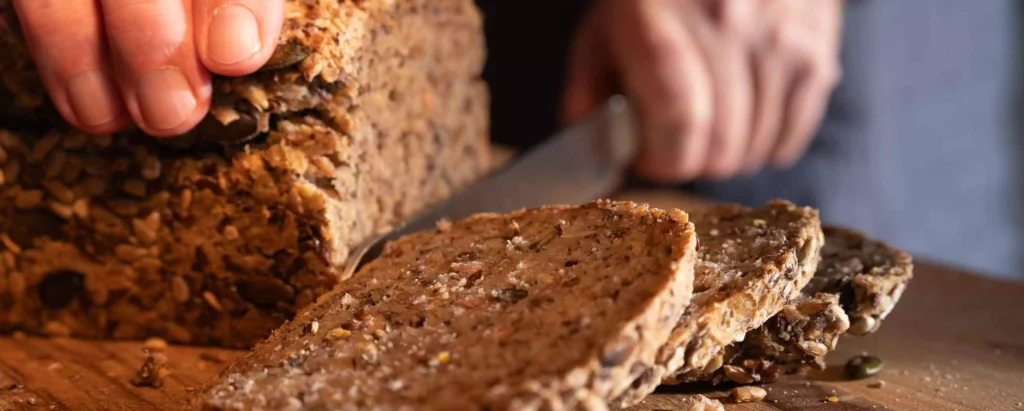By Zablon Oyugi, April 18, 2024, A research by Boston Consulting Group (BCG) titled ‘The Whole Truth About Whole Grains’, shows, while nutritional benefits of eating whole grains are clear as they are made up of three essential food components: the bran, germ, and endosperm, most of the grains consumed today are stripped of the bulk of these important nutrients.
The study also shows that the process by which grains are produced globally has come to have a detrimental environmental impact. With a shift to growing and eating whole grains additionally fortified with vitamins and minerals (micronutrients) along with more diversified cereals, both the nutritional and environmental issues can be addressed and move toward much greater planetary and human health according to the research.
Introduction of refined grains
Until the Industrial Revolution, most grains were consumed in their whole form—for example, as whole wheat flour—with products such as refined flour a premium offering.
But the advent of industrialized mills in the 19th century introduced refined grains to much of the world thus it became easy—and cheaper—to polish off the bran and sift out the germ of wheat and corn, rendering these grains more shelf-stable and cheaper at retail—and less nutritious.
Today, the world’s population eats grains—mostly wheat, rice, and corn in their refined form—more than any other type of food. In low- and middle-income countries, grains make up more than 50% of calories consumed.
The research states that the nutritional deficits of refined grains—through the loss of essential vitamins, minerals, fiber, proteins, healthy fats, and phytochemicals—are not their only drawback. While meat production is responsible for greater carbon emissions per ton than grain production, the massive volume of grains grown every year translates to significant environmental damage.
In fact, according to a range of climate and nature metrics, grains have the biggest environmental impact of all food crops.
To put this in perspective, the greenhouse gas emissions caused by global grain production are greater than the emissions of Russia, Brazil, and Germany combined. Grain crops are also particularly vulnerable to global warming. For example, with each 0.5°C increase in temperature, corn yields are expected to fall by 10% to 20%.
Fortifying refined grains
According to the research the practice of fortifying refined grains to enhance their nutritional profile goes back many decades. The US introduced the mandatory fortification of wheat flour in 1943. Today, 93 countries require the fortification of wheat, 19 of corn, and only eight of rice.
The consumption of whole grains and the fortification of grains vary across crops but have significant room for growth. For example, only 26% of wheat and 3% of rice are fortified globally. And less than one-quarter of all grains are consumed in their whole form.
“If we combine both practices and fortify whole grains, the result is an even more nutritious form of these crops. Add the environmental benefits to the nutritional gains, and fortified whole grains become a powerful tool in three significant ways.”
They provide greater nutrition with fewer raw inputs. And because they pack a greater nutritional punch with less volume, they reduce the environmental footprint by emitting fewer greenhouse gases and requiring less land and water to produce the same amount of food.
“Looked at another way, fortified whole grains would take no additional resources than we use today to produce 20% more food for human consumption—particularly relevant in food-insecure environments. Finally, fortified whole grains—which require less land and fewer ecosystem-damaging synthetic inputs such as fertilizers and pesticides—can promote biodiversity and reduce deforestation.”
Striking impact
Fortified whole grains deliver six to seven times the nutritional value as the same amount of a grain that is later refined.
Unlike the process required for converting raw crops to refined grain products, using only a portion of the grain, converting to whole grains is much more efficient—and reduces the environmental impact by about 20%.
By using fewer synthetic inputs, soil and ecosystem health improves, and the need for smaller parcels of land reduces deforestation and thus habitat and biodiversity loss.
Outcome
In their outcome, the researchers Chris Mitchell, Malte Clausen, Ema Tanovic, and Zoë Karl-Waithaka says, when all the metrics are considered, fortified whole grain foods offer a significant opportunity to reduce environmental impact, especially if nutrition is factored in.
These grains provide six to seven times greater nutrition than the same amount of their refined versions. They drive 20% to 25% less impact on greenhouse gas emissions and land, water, fertilizer, and pesticide use per volume unit, as well as 85% to 90% less environmental impact per nutritional unit.
“It follows therefore that shifting a significant portion of our grain production from refined grains to fortified whole grains would be a powerful decarbonization tool. A 30-percentage point increase in the adoption of whole grains globally would result in a 120 million metric ton CO2e decrease in greenhouse gas emissions annually.”
In this, governments, non-governmental organisations (NGOs) and players across sectors and value chains each have a role to act in promoting the production and consumption of these foods as this can be a dramatically effective tool in both mitigating and adapting to changes in climate and nature.







